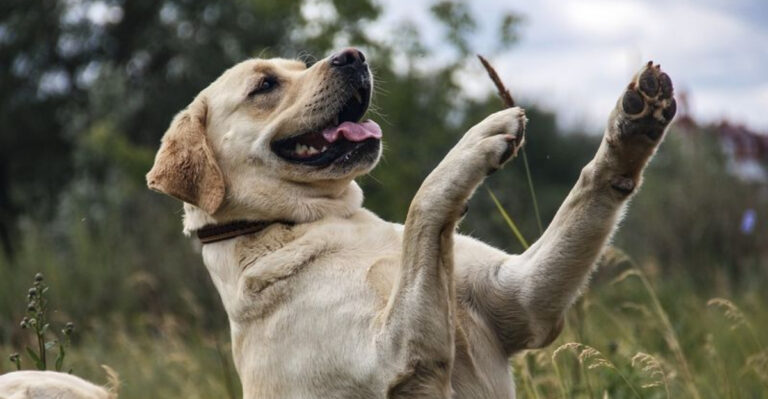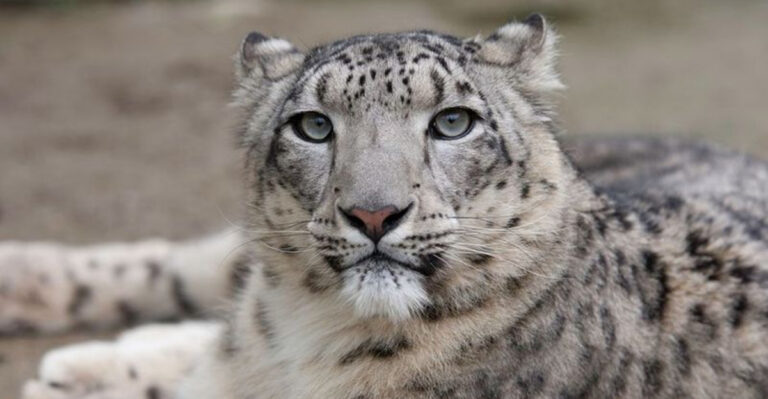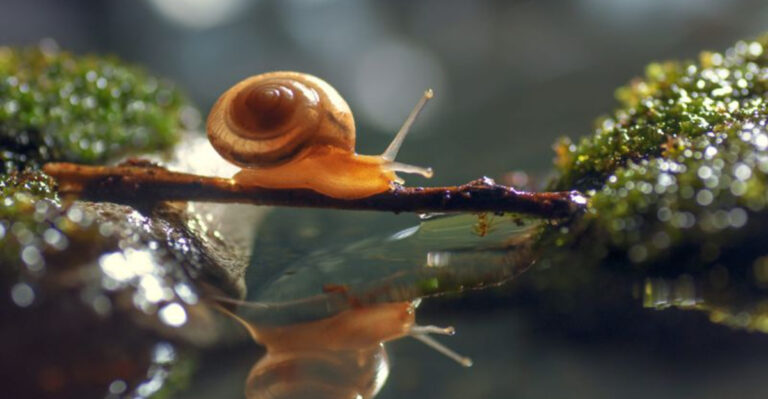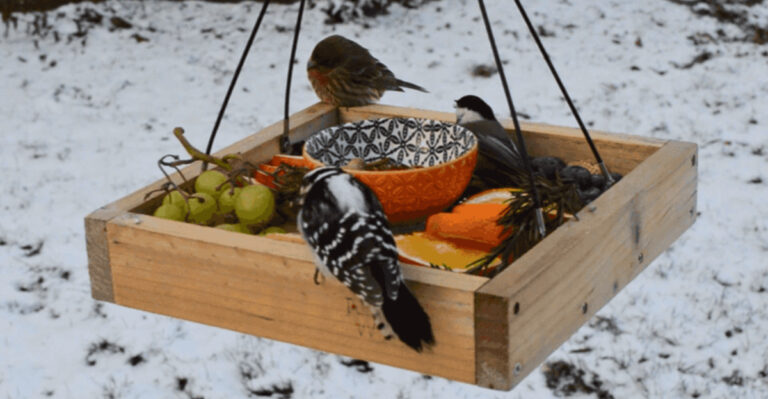8 Reasons Meerkats Are The Most Incredible Social Animals And 5 Animals That Are Not Social At All
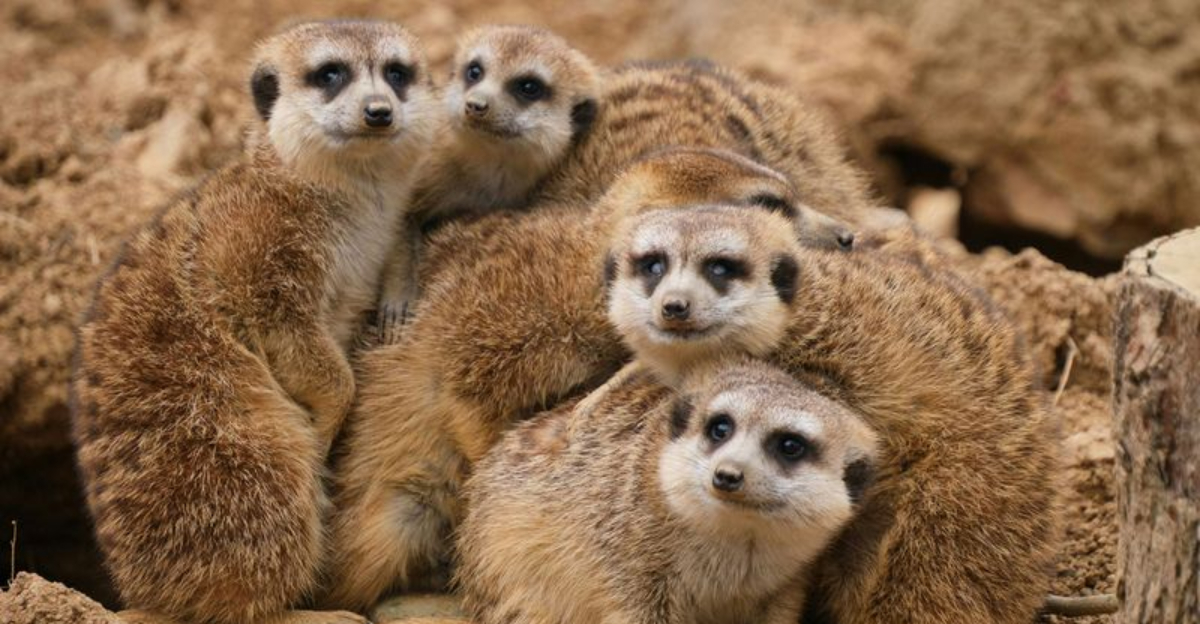
Have you ever watched meerkats standing tall on their hind legs, keeping watch while their family members dig for food? These small mammals from Africa have some of the most complex social lives in the animal kingdom.
While meerkats thrive through teamwork and cooperation, other creatures prefer a solitary lifestyle with minimal interaction. This contrast shows just how diverse animal social structures can be in nature.
1. They Live In Cooperative Groups Called Mobs
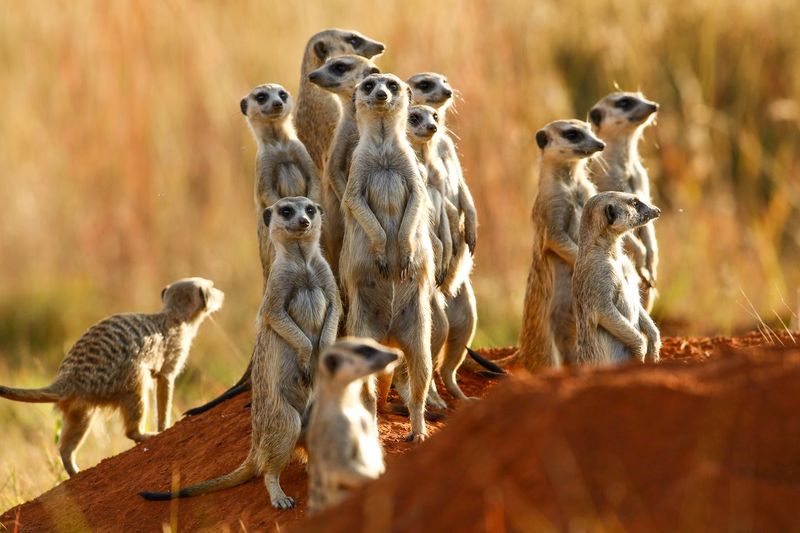
Meerkats thrive in family units of 10-30 individuals called mobs. Each member plays a specific role within this tight-knit community.
The mob structure provides protection against predators and helps with successful foraging in harsh desert environments. Young meerkats learn survival skills directly from older mob members, creating a continuous cycle of knowledge transfer that strengthens their chances of survival.
2. They Use A Complex System Of Vocal Communication
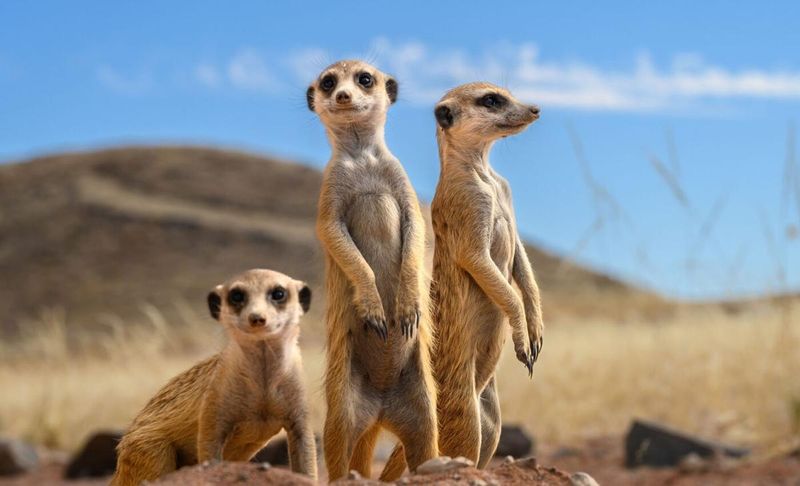
Chatty by nature, meerkats have developed an impressive vocabulary of over 30 distinct calls. Each sound serves a specific purpose – from warning about approaching eagles to announcing the discovery of a juicy beetle.
This sophisticated communication system allows mob members to coordinate activities even when they can’t see each other. Young meerkats begin learning these vital signals from birth, gradually mastering the entire repertoire as they mature.
3. They Take Turns Standing Guard
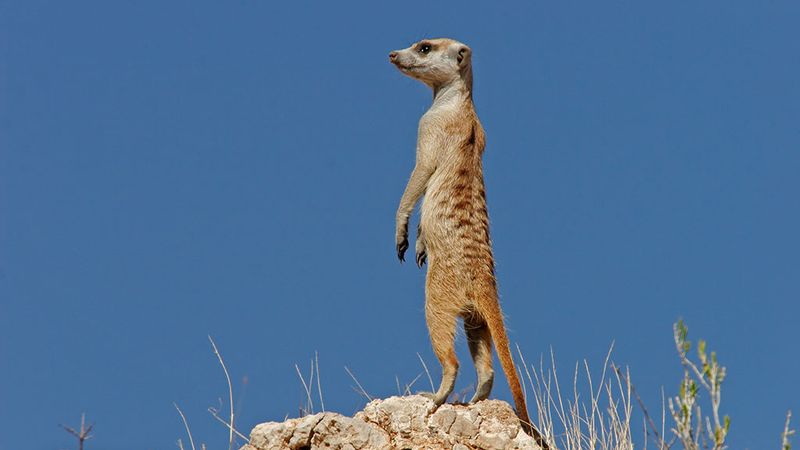
The iconic meerkat sentinel stands tall on its hind legs, scanning the horizon for danger while the rest of the mob forages safely. This selfless behavior protects the entire group.
Sentinels rotate throughout the day, with each meerkat taking a turn at this crucial job. The guard meerkat will sound specific alarm calls that not only alert the group but actually identify what type of predator approaches – whether it’s from the air or ground.
4. They Share Parenting Duties
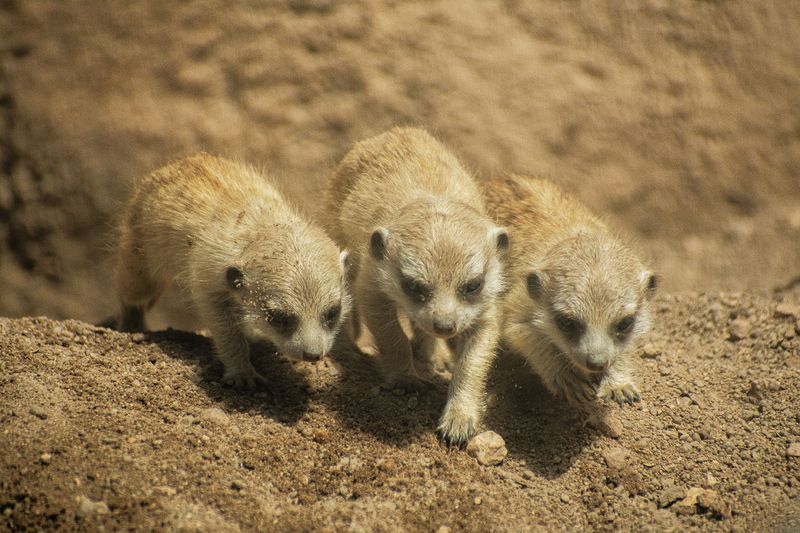
Meerkat parenting goes beyond just mom and dad. The entire mob pitches in to raise the young pups, creating a remarkable daycare system.
While the dominant female produces most of the offspring, subordinate members take turns babysitting, grooming, and even nursing the pups. This communal approach ensures young meerkats receive constant care and protection, significantly increasing their survival rates in the harsh desert environment.
5. They Teach Their Young How To Hunt
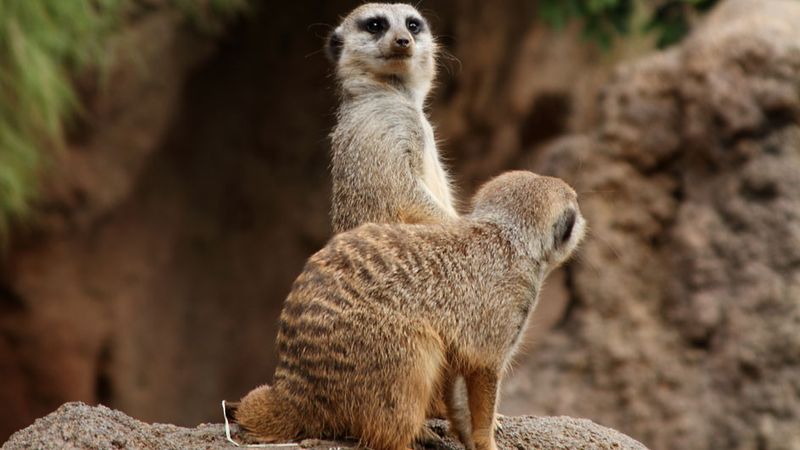
Meerkat adults are patient teachers when it comes to hunting dangerous prey like scorpions. They begin by bringing dead scorpions to pups, allowing them to safely examine and handle the food.
As pups grow more skilled, adults bring increasingly lively prey with stingers removed. Eventually, young meerkats graduate to catching live prey themselves under careful supervision. This methodical training process demonstrates remarkable teaching ability rarely seen in mammals outside of primates.
6. They Coordinate Group Foraging
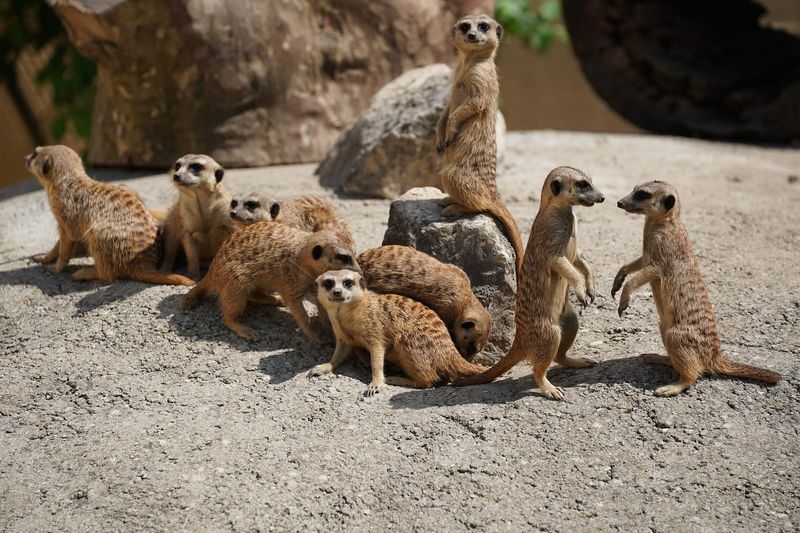
Meerkats turn daily food gathering into a synchronized team event. The mob moves together across the desert landscape, constantly communicating through soft calls that maintain group cohesion.
Individual meerkats dig frantically in the sand, unearthing insects and small vertebrates. The group’s coordinated movement pattern allows them to thoroughly search an area while maintaining safety in numbers. This strategy maximizes food discovery while minimizing the risk of predation.
7. They Show Social Grooming Behaviour
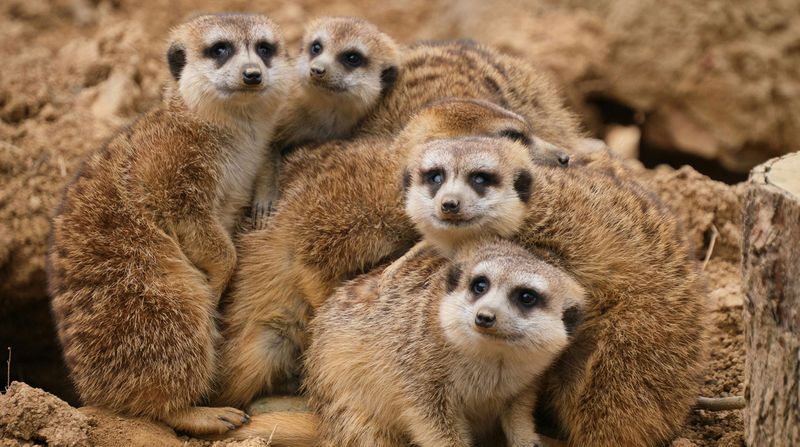
Grooming sessions are social bonding rituals for meerkats. Members gather in relaxed clusters, carefully cleaning each other’s fur to remove parasites and dirt.
Beyond hygiene, these intimate interactions strengthen relationships and reinforce the mob’s social hierarchy. Dominant meerkats typically receive more grooming attention than subordinates. The gentle nibbling and combing creates a peaceful atmosphere after the busy activities of the day.
8. They Cooperate To Defend Territory
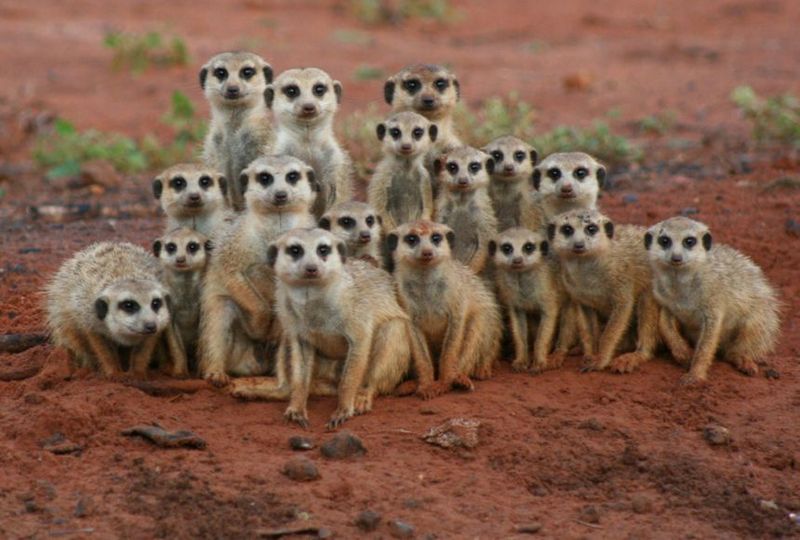
When rival mobs approach their borders, meerkats transform from peaceful foragers into coordinated defenders. The entire group participates in territorial displays, standing tall with tails raised to appear larger and more intimidating.
These confrontations rarely lead to serious fighting, as the impressive visual and vocal displays usually determine which group backs down. By working together, even smaller mobs can successfully defend their precious territory against larger groups through sheer coordination and unity.
9. Snow Leopards
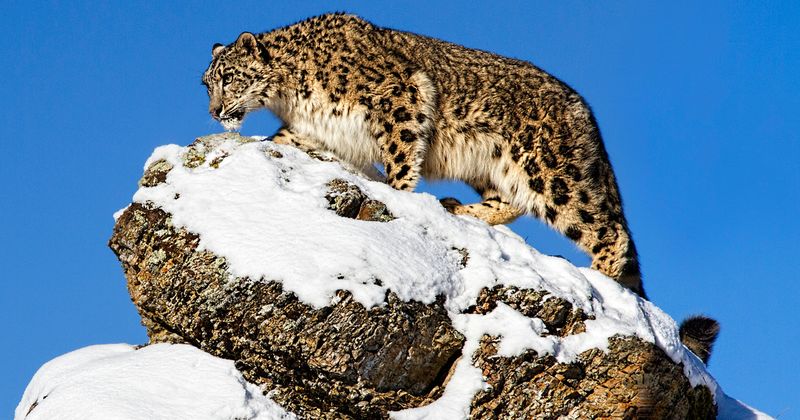
These elusive big cats roam vast territories spanning up to 400 square miles in the remote mountains of Central Asia. Snow leopards actively avoid each other except during brief mating periods.
Their solitary nature stems from hunting necessity – stalking prey across rocky slopes requires stealth that multiple cats would compromise. They mark territories with scent cues, essentially creating invisible boundaries that help them avoid unwanted encounters with their own kind.
10. Aardvarks
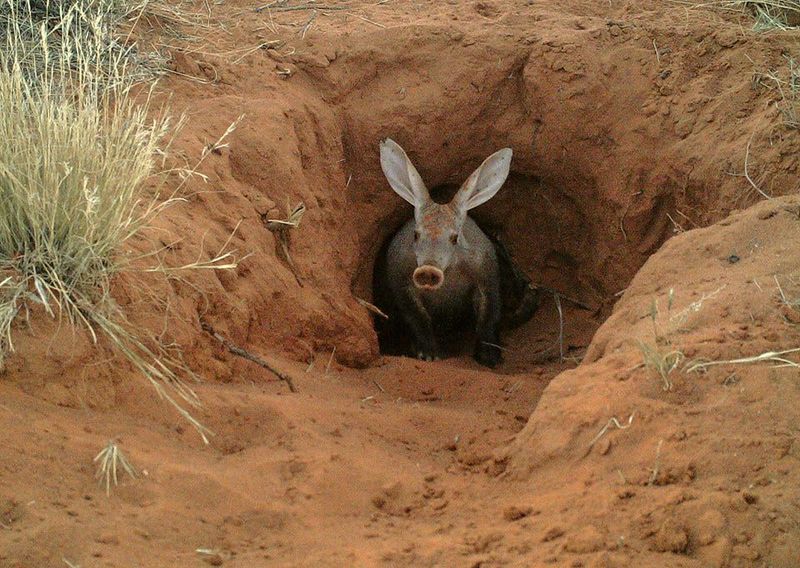
Under the cover of darkness, aardvarks emerge from their burrows to begin solitary hunting expeditions. These peculiar mammals can travel up to 10 miles nightly, following their extraordinary sense of smell to termite mounds.
Aardvarks prefer having no company whatsoever. They maintain exclusive territories and only tolerate other aardvarks during brief mating encounters. Their powerful claws and long snouts are perfectly designed for solo termite hunting, requiring no cooperation from others of their kind.
11. Leopard Geckos
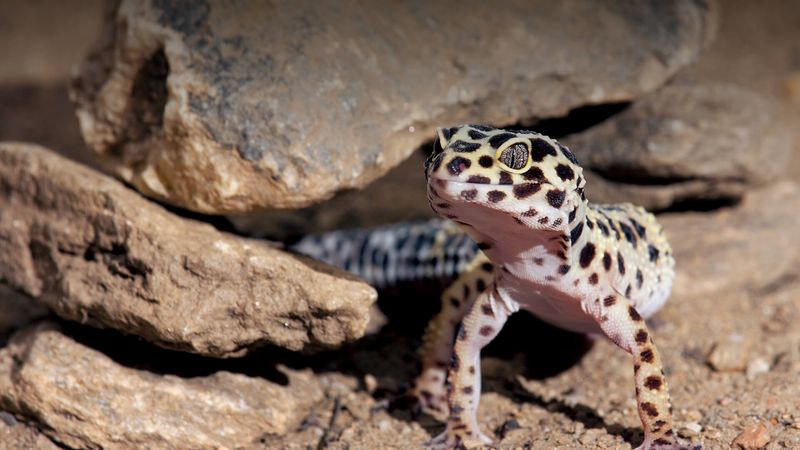
Found naturally in rocky deserts across Asia, leopard geckos live completely independent lives. Males fiercely defend their territories, often engaging in aggressive displays when boundaries are crossed.
Unlike social reptiles that bask together, leopard geckos prefer solitude in their hiding spots. They hunt alone, stalking insects with patient precision. Even mothers show no parental care – they simply lay eggs and depart, leaving the hatchlings to immediately fend for themselves.
12. Platypuses
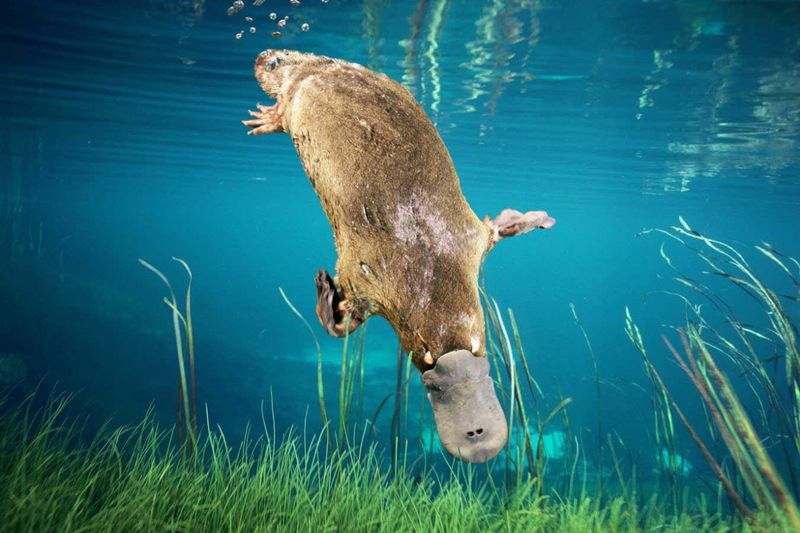
Australia’s strangest mammals spend their lives in splendid isolation. Platypuses establish individual territories along river systems, marked with scent glands that warn others to keep their distance.
These egg-laying mammals hunt alone underwater, using their sensitive bills to detect electrical signals from prey. Adult platypuses have no interest in social gatherings – they actively avoid each other except during breeding season. Even then, the male departs immediately after mating, leaving the female to handle all nesting duties.
13. Hedgehogs
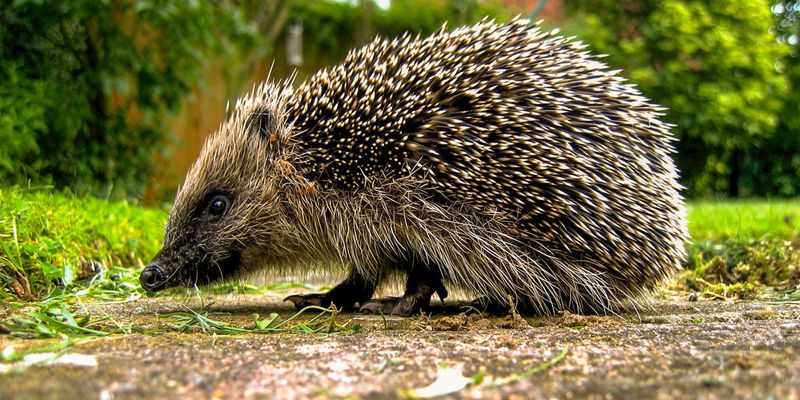
With their spiky armor and grumpy dispositions, hedgehogs are nature’s dedicated introverts. These small mammals forage independently each night, traveling up to a mile in search of insects, worms, and occasional small vertebrates.
Hedgehogs actively avoid their own kind most of the year. When two hedgehogs accidentally meet, they often respond with huffing, puffing, and raised spines. Even mothers eventually chase away their own offspring, ensuring everyone maintains their preferred solitary existence.


